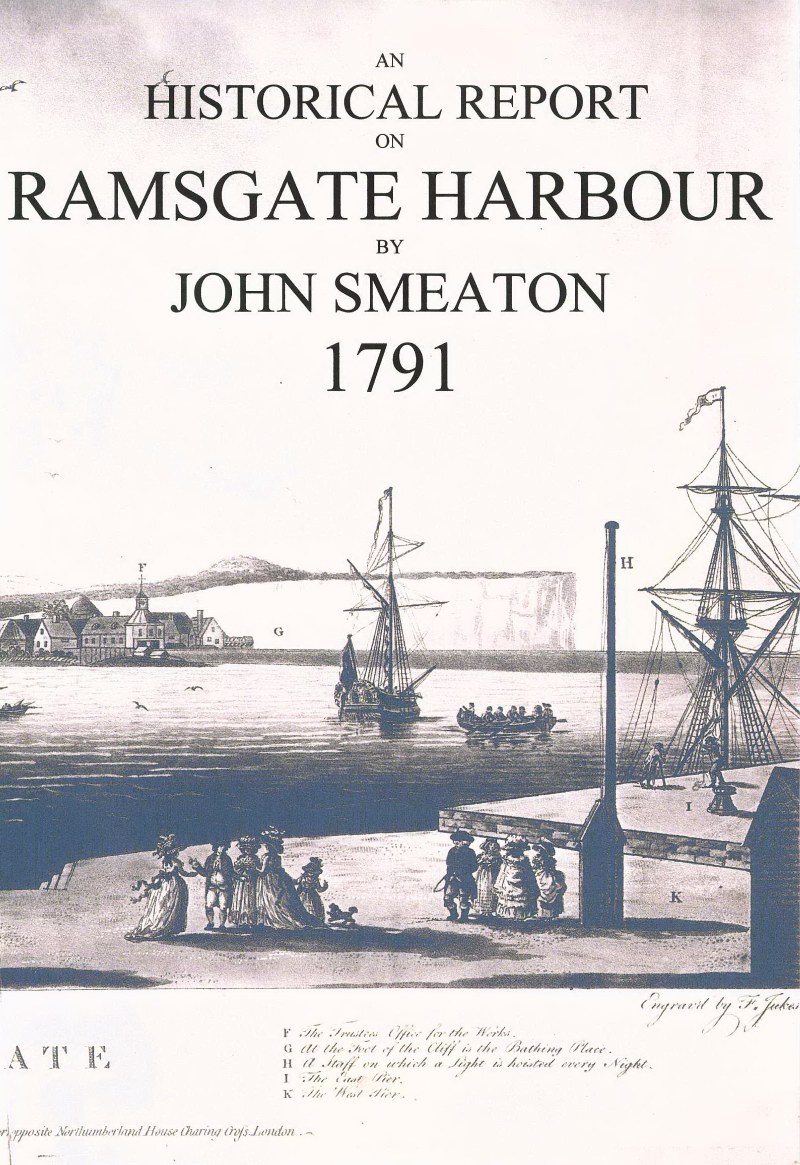An Historical report on Ramsgate Harbour 1791
An Historical report on Ramsgate Harbour 1791
By
John Smeaton
A4 104 Pages Stapled card cover
£8.99
The design and building of bridges and harbours were at the cutting edge of new technology in the 1700s. As with space exploration today many things were uncertain, large expenditure often resulted in failure or only partial success. Indeed it is probable that had Mr Labelye (who lobbied parliament for a harbour near the downs and proposed a scheme for building a canal between Sandwich and the coast) not been otherwise engaged due to problems when Westminster bridge, a construction under his direction that partly sank and had to have considerable rebuilding, the harbour would probably have been built at Sandwich.
At this time it should be noted that the inhabitants of Sandwich, then the main town in this area and once the main port (which had silted up and been left stranded inland), wanted the revenue of any new harbour. They strove against the building of a harbour at Ramsgate and tried repeatedly to get parliament to fund various projects that would once again make Sandwich a major port.
Ramsgate, as a limb of the Cinque Port of Sandwich, was in fact governed by Sandwich the town which was Ramsgate's main rival, something that we are used to even now.
Eventually after the great storm of 1748, when several ships found shelter here combined with the common sense advice of the sea captains in this area that the harbour should be built at Ramsgate, it was agreed to by parliament.
Ramsgate harbour when it was first built had no inner basin, even before it was completed it filled up with sand much more than had been expected. During the 1770s so much sand had accumulated in the harbour that nearly all of it dried out at low tide. In fact by the time it was finished it was almost completely useless as a harbour.
John Smeaton who is generally considered to be the first civil engineer, was consulted at various times to resolve this and other problems in the design of the harbour. He gave advice that in many cases was only partly adhered to. The story of the building of the harbour and how it was eventually turned into a useful refuge for the ships that got caught up in the storms and navigational hazards of our coastline makes an interesting read. It is likely that without Smeaton's innovations our harbour would have been of little or no use when it was most wanted and that many lives would have been lost for want of a refuge for ships sheltering in the downs.
The original book like other antiquarian books is not quite as easy to read as many modern books, at this time the letter s is often printed so that it looks like the letter f, this takes a few pages to get used to. However when compared even to modern engineer's reports it is remarkably readable and interesting.
There are a few technical and nautical words that some of you may not be familiar with so I have added a short glossary of them on the next page.
As far as the production of the book goes I have enlarged the pages a small amount and left wide margins, my copy of this reprint is already covered in notes. The pages were fairly difficult to copy the original paper and ink both having browned slightly with age. I have included a few pictures of Ramsgate in the 1700s to give a feel of the period.
The cover is a copy of an old print of Ramsgate that that I first saw used as a frontispiece to Richardson's book, Fragments of the History of Ville and Liberty of Ramsgate, when I was perusing the map of the harbour in the front of this book I realised the connection between the two which I am sure you will agree is truly remarkable. Luckily I managed to obtain an original printing of the picture that is much more defined, you will notice that it confirms the publication date as being almost the same as the map. One is usually suspicious of the accuracy of old prints as craftsmen who had never seen the place illustrated often produced them from an artists sketch.
Finally many thanks to Bob Hinge for lending his copy of the book to copy for the reprint.
Michael Michaels Bookshop Ramsgate 29th December 2006
